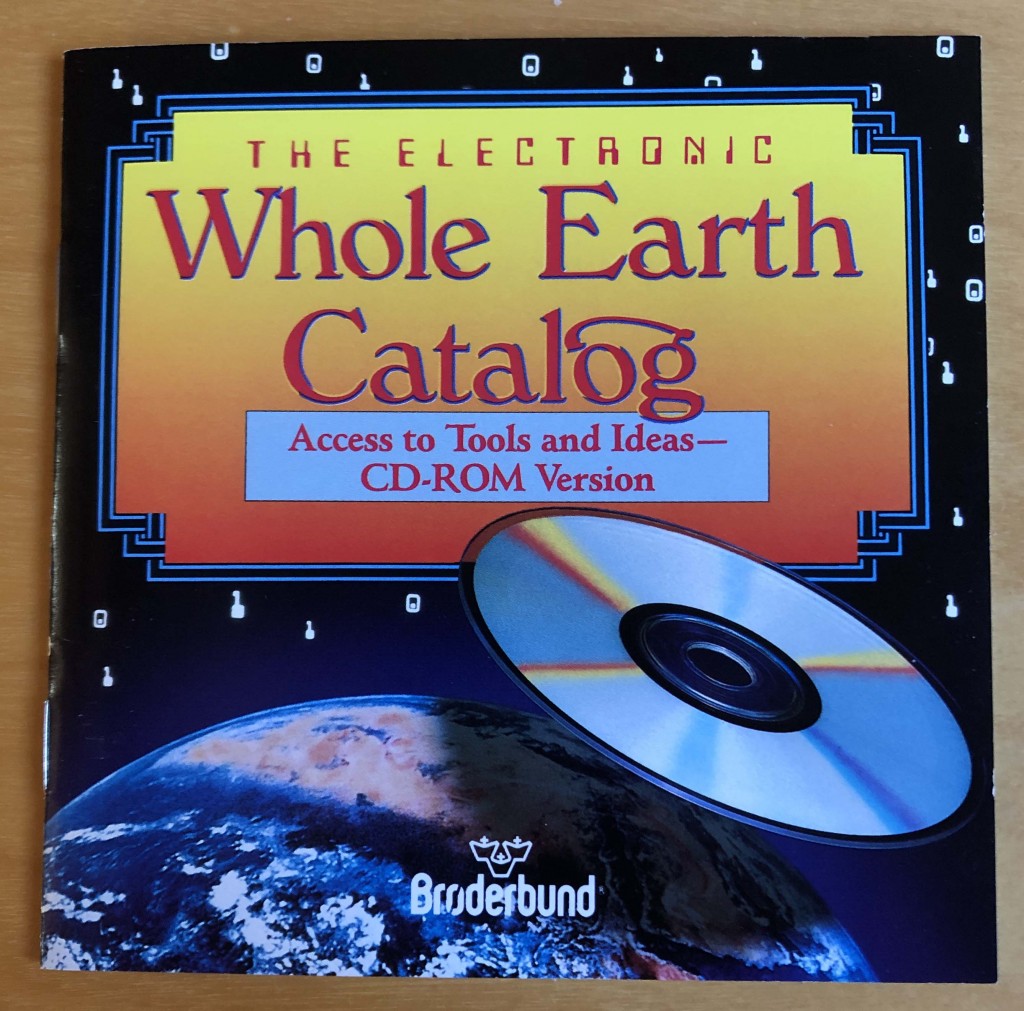The Tiny Web
In 1988-9 I led a project to make an electronic version of the Whole Earth Catalog. The Whole Earth Catalog was a compendium of thousands of user-reviews printed on cheap newsprint and mailed to subscribers. It was an early pre-internet printed on paper. The idea, in 1988, was to take this venerable Catalog of ideas and products, and to be able to quickly search for, browse, and navigate through them in a non-linear non-book way. So this Electronic Whole Earth Catalog would have not just be a digital copy (as merely scanned online), but would want to be an interactive, non-linear, new thing.
A year earlier, Bill Atkinson, one of the co-creators of the Macintosh at Apple, inspired by an LSD trip, released HyperCard. This as an app for the Mac that was organized around the metaphor of 3×5 cards. Words on cards could be linked to other cards, in a million different ways. The text was hyperlinked. You can surf along the links from one idea to another. More importantly, you could make up as many cards and links as you wanted. HyperCard was the first consumer instantiation of Ted Nelson’s idea of hypertext and hyperlinks. Today we recognize this hyperlinking as the web. But in the case of HyperCard this linking all happened within the confines of one computer. This tiny web was not connected to the internet.
Besides offering HyperCard for free to any Mac user, Apple had also just released an Apple CD-Rom drive. Now anyone could access the immense storage of data available on a new device called a CD-Rom. A CD contained an insane amount of data — like 190 MBs! The problem for Apple was that there were zero CD-Roms all ready to play, so who is gonna buy an expensive CD driver? This chicken and egg problem of needing developers to create content for a new device or platform is now a standard biz development challenge. Steve Jobs was a huge fan of the Whole Earth Catalog, and he would later rave about it in his Stanford commencement address, but he had already left Apple. Another fan of Whole Earth at Apple was Mike Liebhold. He correctly assessed that the Catalog was kind of ready-made for hyperlinking. And it was vast, so it could fill a CD-Rom. And it was still popular. He approached Stewart Brand and us at Whole Earth and after a few meetings Apple decided to fund the creation of an hyperlinked version of the Whole Earth built on HyperCard and issued on a CD-Rom. This Catalog CD, Apple believed, would be one of the reasons to buy an Apple CD-Rom Driver.
Apple assigned some ace programers to the project (like Tim Oren and Ted Kaehler) and we assigned a project manager and editors (Like Keith Jordan, Kathleen O’Neill, Richard Schuffler, among others), and then began the huge task of digitizing images and re-keyboarding all the text (since nothing was digitized before). Everything was squeezed onto virtual 3×5 cards. We were even able to add sound files in the music section. Then the really fun part began of designing the user interface. How do you navigate through this ocean of material? How do you see how much of the catalog you have not seen yet? When do you leave a section? What does “going back” mean? How do you get back to somewhere you’ve been? To someone today who grew up on the web, these kind of questions seem obvious or cute, but in 1989 we wrestled with them. How do you search for anything? Oh, you need a search engine, which we made.
The final product had maybe 4,000 cards and was the largest set of HyperCards made and the largest hyperlinked document before Tim Berners-Lee got the world-wide web going a year later. The EWEC never sold very many copies, in part because Apple never sold very many CD drivers. And of course once the web exploded, the Electronic Whole Earth Catalog was seen as a tiny self-enclosed web — not the world-wide version you really wanted. But for a short time, those of us who worked on it were able to experience that weird/wonderful experience you get surfing along a string of links, following a flow state as you explore a vast possibility space at your own speed and interests.
I recently dug up my only copy of EWWC, and made a copy it for the Internet Archive. Some folks there uploaded it with a Mac Plus emulator, and so you too can now enjoy the Electronic Whole Earth Catalog online at the Internet Archive. Download and play like you were back in the 1980s.
It’s thrilling to see it 30 years later. No color, tiny pages, slow. It was the Tiny Web —the web before the web.
P.S. I onced asked the Apple crew why, after having invented HyperCard — a hyperlinked web — they did not go onto make the world-wide web distributed onto the internet. They were all net savy. Their answer boils down to this: 1) A few people had tried a web on the internet (Owl and others) and they failed, and 2) Apple could not see a business case for doing so. What would you sell?



